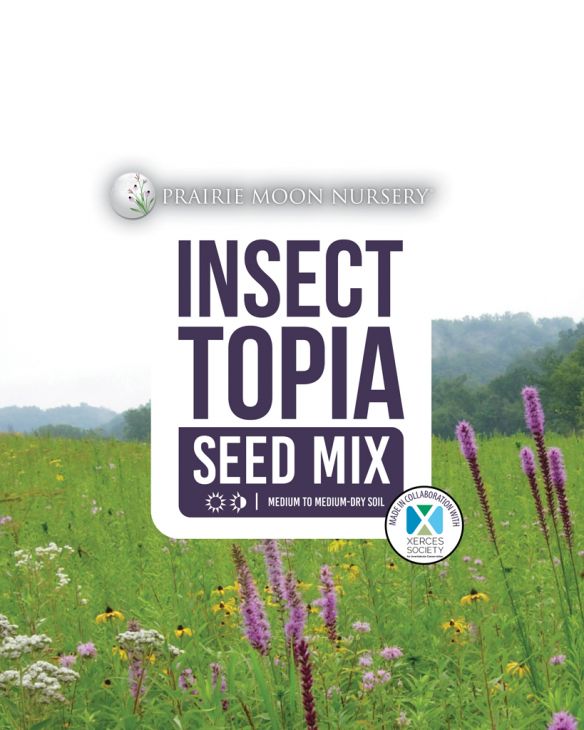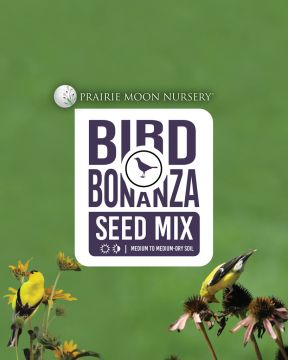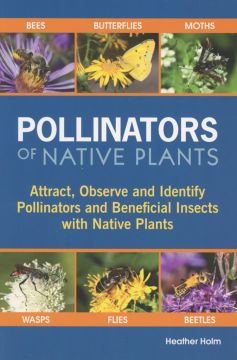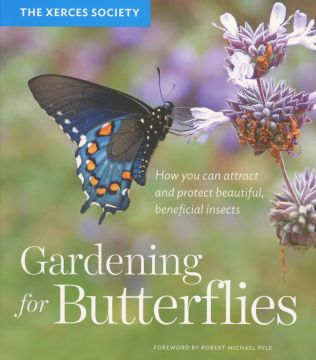Establishing a native plant community from seed can take 3 years or more - learn more.
All mixes are subject to change without notice depending on availability of species.
|
Insectopia© Seed Mix by Prairie Moon® Nursery 8.69 lbs per acre | 99 Seeds per sq/ft |
|
|
WILDFLOWERS |
|
|
Botanical Name (Common Name) |
% by wt. |
|
Achillea millefolium (Yarrow) |
0.36 |
|
Agastache foeniculum (Anise Hyssop) |
1.08 |
|
Allium stellatum (Prairie Onion) |
1.44 |
|
Anemone cylindrica (Thimbleweed) |
0.36 |
|
Asclepias incarnata (Rose Milkweed) |
1.08 |
|
Asclepias syriaca (Common Milkweed) |
0.90 |
|
Asclepias tuberosa (Butterfly Weed) |
1.08 |
|
Asclepias verticillata (Whorled Milkweed) |
0.36 |
|
Chamaecrista fasciculata (Partridge Pea) |
11.51 |
|
Coreopsis lanceolata (Lance-leaf Coreopsis) |
5.57 |
|
Coreopsis palmata (Prairie Coreopsis) |
0.36 |
|
Dalea candida (White Prairie Clover) |
2.52 |
|
Dalea purpurea (Purple Prairie Clover) |
3.24 |
|
Drymocallis arguta (Prairie Cinquefoil) |
0.72 |
|
Echinacea angustifolia (Narrow-leaved Coneflower) |
1.44 |
|
Eryngium yuccifolium (Rattlesnake Master) |
2.88 |
|
Euthamia graminifolia (Grass-leaved Goldenrod) |
0.18 |
|
Helianthus pauciflorus (Showy Sunflower) |
0.36 |
|
Helianthus helianthoides (Early Sunflower) |
3.60 |
|
Lespedeza capitata (Round-headed Bush Clover) |
0.72 |
|
Liatris pycnostachya (Prairie Blazing Star) |
1.44 |
|
Lobelia siphilitica (Great Blue Lobelia) |
0.58 |
|
Monarda fistulosa (Wild Bergamot) |
0.72 |
|
Monarda punctata (Spotted Bee Balm) |
1.44 |
|
Oligoneuron riddellii (Riddell's Goldenrod) |
0.72 |
|
Penstemon grandiflorus (Large-flowered Beardtongue) |
0.36 |
|
Pycnanthemum virginianum (Mountain Mint) |
1.08 |
|
Ratibida pinnata (Yellow Coneflower) |
0.72 |
|
Rudbeckia hirta (Black-eyed Susan) |
2.16 |
|
Scrophularia lanceolata (Early Figwort) |
0.72 |
|
Solidago speciosa (Showy Goldenrod) |
0.54 |
|
Symphyotrichum laeve (Smooth Blue Aster) |
0.90 |
|
Tradescantia ohiensis (Ohio Spiderwort) |
2.16 |
|
Verbena stricta (Hoary Vervain) |
1.80 |
|
Veronicastrum virginicum (Culver's Root) |
0.36 |
|
Zizia aurea (Golden Alexanders) |
4.31 |
|
Totals of WILDFLOWERS: |
59.73 % |
|
SHRUBS |
|
|
Botanical Name (Common Name) |
% by wt. |
|
Ceanothus americanus (New Jersey Tea) |
0.72 |
|
Totals of SHRUBS |
0.72 % |
|
GRASSES, SEDGES & RUSHES |
|
|
Botanical Name (Common Name) |
% by wt. |
|
Bouteloua curtipendula (Side-oats Grama) |
7.19 |
|
Carex molesta (Field Oval Sedge) |
3.24 |
|
Elymus canadensis (Canada Wild Rye) |
11.51 |
|
Juncus tenuis (Path Rush) |
0.36 |
|
Schizachyrium scoparium (Little Bluestem) |
15.82 |
|
Sporobolus heterolepis (Prairie Dropseed) |
1.44 |
|
Totals of GRASSES, SEDGES & RUSHES: |
39.55 % |
| (FILTER PLANTS IN THIS SEED MIX) | |
|
Last updated 1/31/25 |
|
7 Questions asked on Insectopia Seed Mix
When seeding an area that is one acre or smaller, hand-broadcasting is actually the most uncomplicated, efficient approach. Our downloadable Brochure on this topic has instructions for accomplishing this.
For larger areas, mechanical seeders may be more efficient, but they need to be able to apply different-sized seeds at optimal depths with minimal soil disturbance. We use a Truax Seed Drill because it was designed for native seeds and features different boxes to facilitate distribution of variously-sized seeds at appropriate depths.Remember that very small seeds should be surface-sown while large seeds can be shallowly inserted (about the depth of their own thickness). Avoid standard lawn-grass seeders that are made to distribute only one size of seed.
I personally love this species; it is incredibly affordable and produces lovely yellow flowers in its first growing season! You could easily add several more ounces of Partridge Pea to the acre of Insectopia for instant pollinator habitat.
*PLEASE NOTE: we are a mail order nursery and have no retail facilities, but you may pick up your order if prior arrangements are made. Pick up orders are subject to **MN Sales Tax.
US Shipping & Handling Charges
SEED $100.00 and under: $5.00
Retail SEED orders over $100.00 ship free!
Custom seed mixes or discounted seed sales over $100, add 5% of the total seed cost
(for orders over $1,000 a package signature may be required)
BARE ROOT and POTTED PLANTS $50.00 and under: $9.00
over $50.00: 18% of the total plant cost. (For orders over $1,000 a package signature may be required.)
TOOLS and BOOKS have the shipping fee included in the cost of the product (within the contiguous US).
**We are required to collect state sales tax in certain states. Your state's eligibility and % will be calculated at checkout. MN State Sales Tax of 7.375% is applied for orders picked up at our MN location. Shipping & handling charges are also subject to the sales tax.
Shipping Season
SEED, TOOLS and BOOKS are sent year-round. Most orders ship within 1-3 business days.
BARE ROOT PLANTS are shipped during optimal transplanting time: Spring (April-May) and Fall (Oct). Some ephemeral species are also available for summer shipping. Since our plants are field-grown, Nature sets the schedule each year as to when our season will begin and end. We fill all orders, on a first-come, first-serve basis, to the best of our ability depending on weather conditions beyond our control.
POTTED PLANTS (Trays of 32/38/50 plugs and 3-packs) typically begin shipping early May and go into June; shipping time is heavily dependent on all the species in your order being well-rooted. If winter-spring greenhouse growing conditions are favorable and all species are well-rooted at once, then we ship by order date (first come, first serve). We are a Midwest greenhouse, and due to the challenges of getting all the species in the Mix & Match and Pre-Designed Garden Kits transit-ready at the same time, we typically can't ship before early May. Earlier shipment requests will be considered on a case-by-case basis.
*We are unable to ship PLANTS (bare root or potted) outside the contiguous US or to CALIFORNIA due to regulations.
Delivery
We ship using USPS, UPS and Spee Dee. UPS and Spee Dee are often used for expediting plant orders; they will not deliver to Post Office Box numbers, so please also include your street address if ordering plants. We send tracking numbers to your email address so please include it when you order.
FOR MORE DETAILED SHIPPING INFORMATION, INCLUDING CANADA SHIPPING RATES (SEED ONLY), PLEASE SEE 'SHIPPING' AT THE FOOTER OF THIS WEBSITE.




















